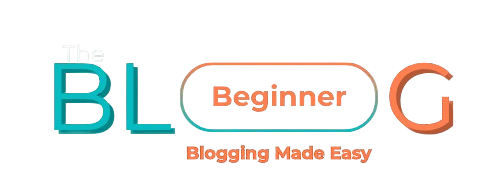Website Design Basics for Beginners
Table of Contents
🧠 Why Website Design Matters
Website design isn’t just about making things look pretty — it’s about creating a smooth, enjoyable experience for your visitors.
A well-designed site:
- Builds trust with your audience
- Keeps visitors engaged
- Helps with SEO and conversions
- Reflects your brand’s personality
First impressions happen fast — let’s make yours a good one.
🧱 Step 1: Choose a Clean, Responsive Theme
Your theme controls the overall look and layout of your site. When choosing a WordPress theme, look for:
- Mobile responsiveness (looks good on all devices)
- Fast loading and lightweight
- Easy customization options
- Compatibility with page builders and plugins
💡 Recommended: Blocksy, Astra, or GeneratePress — perfect for beginners and pros alike.
🎨 Step 2: Define Your Brand Style
A consistent style helps your site look professional and memorable. Define:
- Colors: Choose 2–3 brand colors
- Typography: Use 1–2 fonts max for readability
- Logo: A simple logo that reflects your niche
- Tone: Casual? Professional? Friendly? Choose a voice and stick with it
✅ Tip: Use tools like Coolors.co or Fontpair to find great color/font combinations.
🖼️ Step 3: Plan Your Layout
Design each page with purpose. The most common layout sections are:
- Header: Logo + navigation menu
- Hero Section: Eye-catching headline and call-to-action
- Content Blocks: Text, images, buttons
- Sidebar (optional): For categories, search, or email signup
- Footer: Contact info, links, copyright, etc.
🧩 Less is more — keep it simple, clean, and focused.
✨ Step 4: Use Visual Hierarchy
Guide your readers by making important elements stand out:
- Use larger fonts for headings
- Highlight buttons or CTAs with contrast colors
- Use spacing and padding to avoid clutter
- Group related content visually
Think of your page like a story — what should people notice first?
🧩 Step 5: Add Useful Elements
Great design also includes functional elements, such as:
- Call-to-action buttons (Subscribe, Learn More, etc.)
- Internal links to related content
- Search bar to help users explore
- Image alt text for SEO and accessibility
- Breadcrumbs for easy navigation
These details improve both user experience and SEO.
🧪 Step 6: Test Across Devices
Once you design your site, check how it looks and works on:
- Mobile phones
- Tablets
- Desktop screens
Fix anything that looks weird, loads slowly, or doesn’t feel intuitive.
Use tools like Responsive Checker to preview across screen sizes.
🛠️ Website Design Tools You Can Try
Here are some beginner-friendly tools to design and customize your blog:
- Canva – for logos, featured images, and blog graphics
- Elementor – drag-and-drop page builder (optional)
- Figma – wireframing and layout design
- Unsplash / Pexels – free high-quality images
- Google Fonts – beautiful and free typography
🔗 Internal Navigation
👉 Next: Hosting & Domains for Beginners
👉 Want to design with confidence? Read our guide on Brand Identity (coming soon)
👉 Need help choosing a theme? Check out our Theme Comparison guide (coming soon)
💬 Final Words
Website design isn’t about perfection — it’s about connection.
Make it easy for visitors to find, read, and enjoy your content.
Stay clean. Stay focused. And most of all — stay you 💙
